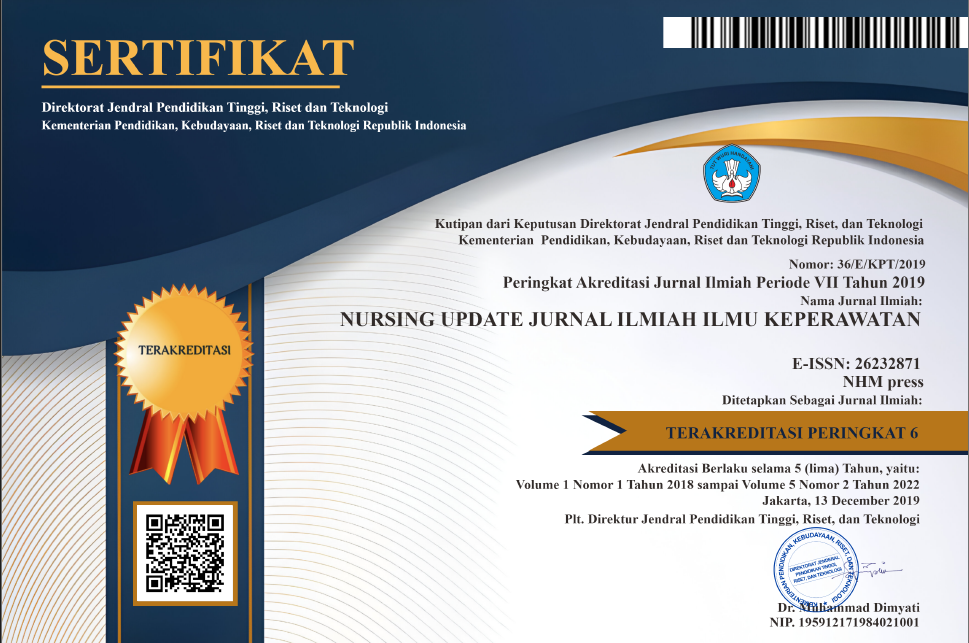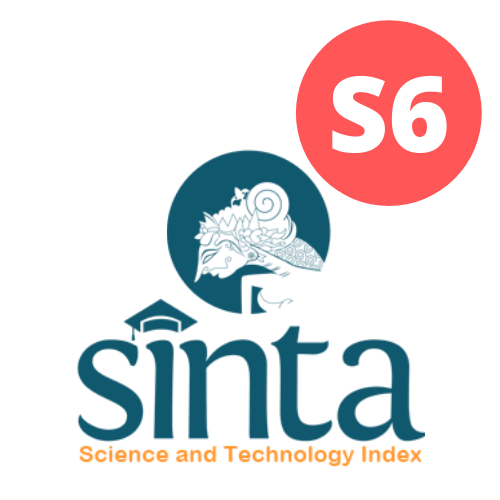STORYTELLING MENGGUNAKAN GLOVES CERIA MENINGKATKAN KEMAMPUAN CUCI TANGAN ANAK PENDERITA DIARE
Abstract
Penyakit berbasis lingkungan seperti diare dapat terjadi akibat kurangnya kemampuan hygiene dan cuci tangan pada anak. Kemampuan mencuci tangan yang baik dan benar terbukti secara efektif mencegah diare, namun rendahnya kemampuan cuci tangan pada anak harus diatasi dengan berbagai metode edukasi yang menarik. Tujuan penelitian ini untuk mengetahui efektifitas edukasi cuci tangan dengan metode storytelling menggunakan gloves ceria terhadap kemampuan cuci tangan anak penderita diare. Penelitian ini menggunakan metode quasy eksperiment dengan pendekatan one group pre-test & post-test design. Tehnik pengambilan sampel menggunakan purposive sampling, sebanyak 31 responden usia sekolah berpartisipasi. Intervensi diberikan dengan mengikuti SOP cuci tangan standar WHO. Masing-masing responden mendapatkan edukasi sebanyak 3x sehari selama 3 hari berturut-turut. Pengumpulan data kemampuan cuci tangan dinilai dan diobservasi menggunakan lembar observasi. Data dianalisais menggunakan uji statistik Wilcoxon signed rank test. Hasil penelitian menunjukkan bahwa terdapat efektifitas pemberian edukasi cuci tangan dengan metode storrytelling menggunakan gloves ceria terhadap kemampuan cuci tangan pada anak penderita diare dengan p value 0.000. Diharapkan perawat dapat menerapkan metode storrytelling menggunakan gloves ceria untuk meningkatkan motivasi dan kemampuan cuci tangan anak penderita diare.
Environmental-based diseases such as diarrhea occur due to a lack of hygiene and hand-washing skills in children. The ability to wash hands well and correctly has been proven effective in preventing diarrhea. The low ability to wash hands in children must be overcome with various interesting educational methods. This research aims to determine the effectiveness of hand-washing education using the storytelling method using cheerful gloves on the hand-washing ability of children with diarrhea. This research uses a quasi-experimental method with a one-group pre-test & post-test design approach. The sampling technique used purposive sampling, and 31 school-age respondents participated. Interventions are provided by following WHO standard hand washing SOPs. Each respondent received education 3 times a day for 3 consecutive days. Data collection on hand-washing ability was assessed and observed using an observation sheet. Data analysis used the Wilcoxon Signed Rank Test statistical test. The research results show effectiveness in providing hand washing education using the storytelling method using cheerful gloves on the ability to wash hands in children suffering from diarrhea with a p-value of 0.000. It is hoped that nurses can apply the storytelling method using cheerful gloves to increase the motivation and ability to wash the hands of children with diarrhea.










